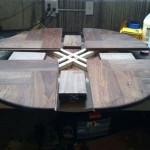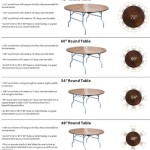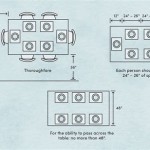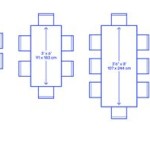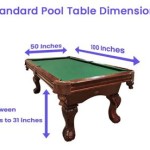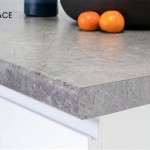Understanding Wood Dining Table Bases: A Comprehensive Guide
The dining table serves as a central gathering point within a home, facilitating shared meals, conversations, and memories. While the tabletop often receives primary attention for its aesthetic appeal and functionality, the base supporting it plays a crucial role in the table's overall stability, style, and durability. Wood dining table bases offer a blend of natural beauty and structural integrity, making them a popular choice for a wide range of interior design styles. This article provides a comprehensive overview of wood dining table bases, exploring various types, wood species, design considerations, and factors influencing their selection.
The selection of a dining table base significantly impacts the aesthetic and functional qualities of the entire table. The base dictates the available legroom, the overall style, and the level of stability. Therefore, a well-informed decision requires careful consideration of several factors, including the size and shape of the tabletop, the desired aesthetic, and the intended use of the dining table.
Wood possesses innate characteristics that contribute to its appeal as a material for table bases. Its natural grain patterns and varied color tones introduce warmth and character into a space. Furthermore, wood's workability allows for intricate designs and detailed craftsmanship. The inherent strength of wood ensures that the table base can reliably support the tabletop and withstand everyday use.
Types of Wood Dining Table Bases
Wood dining table bases are available in a diverse array of designs, each offering a unique aesthetic and functional advantage. The choice of base type should correlate with the overall style of the dining room and the desired level of stability and legroom.
Pedestal Bases: Pedestal bases consist of a central support that extends from the floor to the tabletop. They are typically constructed from a single piece of wood or multiple components joined together. Pedestal bases are well-suited for round or square tabletops, providing ample legroom around the perimeter of the table. The design can range from simple and minimalist to ornate and elaborate, depending on the desired aesthetic. A key advantage of pedestal bases is the obstruction-free legroom, which allows diners to sit comfortably without bumping their knees against legs.
A subcategory of pedestal bases is the trestle base. Trestle bases typically use two vertical supports connected by a horizontal beam or stretcher. This construction provides excellent stability and is often found in rustic or farmhouse-style dining tables. Trestle bases offer a visually distinctive appearance, contributing to the overall character of the dining space.
Leg Bases: Leg bases are the most common type of dining table base, consisting of four or more legs positioned at the corners of the tabletop. Leg bases offer a classic and versatile design that complements a wide range of interior styles. The legs can be straight, tapered, curved, or intricately carved, allowing for customization to suit diverse aesthetic preferences. The placement and design of the legs influence the available legroom. Legs positioned closer to the corners of the tabletop can maximize seating capacity, while legs set further inward create a more streamlined appearance. Variations on leg configurations include splayed legs, which offer a mid-century modern aesthetic, and turned legs, which provide a more traditional appearance.
X-Bases: X-bases are characterized by two crossing wooden supports that form an "X" shape beneath the tabletop. This design provides excellent stability and a visually striking appearance. X-bases are often found in rustic or industrial-style dining tables, adding a touch of architectural interest to the dining space. The X-shape creates a stable platform, capable of supporting heavier tabletops. However, the design may restrict legroom compared to other base types.
Live Edge Bases: Live edge bases incorporate naturally shaped pieces of wood, showcasing the organic edge of the tree. These bases are often paired with live edge tabletops to create a cohesive and visually stunning dining table. Live edge bases bring a sense of nature into the home, adding a unique and artistic element to the dining space. These bases frequently feature unique grain patterns and natural imperfections, further enhancing their individuality.
Wood Species for Dining Table Bases
The selection of wood species significantly impacts the appearance, durability, and cost of a dining table base. Different wood species possess distinct characteristics, including grain patterns, color tones, and hardness. Understanding these differences is crucial for making an informed decision that aligns with aesthetic preferences and performance requirements.
Oak: Oak is a popular choice for dining table bases due to its strength, durability, and distinctive grain patterns. It is available in two primary varieties: red oak and white oak. Red oak features a reddish hue and a more open grain, while white oak has a lighter color and a tighter grain. Oak is a versatile wood that can be stained or finished to complement a wide range of interior styles. Its natural resistance to wear and tear makes it a suitable choice for high-traffic areas.
Maple: Maple is a hard and durable wood with a fine, even grain. It is typically lighter in color than oak, ranging from cream to light brown. Maple is often used in contemporary or minimalist dining tables due to its clean and understated aesthetic. It is also a good choice for painted or stained finishes, as its smooth surface allows for even color application.
Walnut: Walnut is a premium hardwood known for its rich, dark brown color and beautiful grain patterns. It is a durable and stable wood that is resistant to warping and cracking. Walnut dining table bases add a touch of elegance and sophistication to the dining space. Its natural beauty makes it a popular choice for high-end furniture.
Cherry: Cherry is a hardwood with a warm, reddish-brown color that deepens over time. It has a smooth, fine grain and is relatively easy to work with. Cherry dining table bases offer a classic and timeless aesthetic. Its natural beauty makes it a popular choice for both traditional and contemporary styles.
Pine: Pine is a softwood that is less expensive than hardwoods like oak, maple, and walnut. It is typically light in color with prominent knots and grain patterns. Pine dining table bases are often found in rustic or farmhouse-style dining tables. While less durable than hardwoods, pine can still provide a sturdy and attractive base for a dining table.
Design Considerations for Wood Dining Table Bases
Beyond the type and wood species, several design considerations influence the selection of a wood dining table base. These considerations encompass the overall style of the dining room, the size and shape of the tabletop, and the desired level of functionality.
Style: The style of the dining table base should complement the overall aesthetic of the dining room. For example, a traditional dining room might benefit from a leg base with turned or carved legs, while a contemporary dining room might favor a minimalist pedestal base or a sleek metal base with wooden accents. The color and finish of the wood should also complement the existing decor.
Tabletop Size and Shape: The size and shape of the tabletop dictate the appropriate size and type of base. Larger tabletops require more substantial bases to ensure stability. Round or square tabletops are often paired with pedestal bases, while rectangular or oval tabletops are typically supported by leg bases or trestle bases. The proportions of the base should be visually balanced with the size of the tabletop.
Height and Legroom: The height of the dining table base should be appropriate for comfortable dining. Standard dining table height is typically between 28 and 30 inches. The design of the base should also consider the available legroom. Pedestal bases generally offer the most legroom, while leg bases with legs positioned closer to the corners of the tabletop may restrict legroom. The height of the apron (the strip of wood that runs around the underside of the tabletop) should also be considered, as a wider apron can reduce the space available for legs.
Finish and Protection: The finish of the wood dining table base protects the wood from moisture, scratches, and stains. Common finishes include varnish, lacquer, polyurethane, and oil. The choice of finish also influences the appearance of the wood, ranging from matte to glossy. A durable finish is essential for ensuring the longevity of the table base. Regular cleaning and maintenance are also necessary to preserve the finish and prevent damage.
Sustainability: Sustainable sourcing and manufacturing practices are increasingly important considerations when selecting wood furniture. Look for wood that is certified by organizations like the Forest Stewardship Council (FSC), which ensures that the wood is harvested from responsibly managed forests. Consider the environmental impact of the manufacturing process, including the use of finishes and adhesives.
Customization: Many furniture makers offer customization options for wood dining table bases, allowing customers to select the wood species, finish, and design details. Customization enables the creation of a unique and personalized dining table that perfectly complements the individual's style and needs. Working with a skilled craftsman can ensure that the base is structurally sound and aesthetically pleasing.
The selection of a wood dining table base is a multifaceted process that requires careful consideration of style, wood species, design, and functionality. By understanding the various options available and the factors influencing their performance, individuals can make an informed decision that results in a beautiful and durable dining table that will be enjoyed for years to come.

Root Dining Table Base 60 Round Glass Top Faux Bois

Lancaster Table Seating Industrial Mahogany Standard Height Trestle Base For 30 X 72 Tops

Art Wood Base Dining Table By Bonaldo Room Service 360

The Diamond Dining Table Base Industrial Sy Heavy Duty

Litton Lane Light Brown Teak Wood Contemporary Column Base Dining Table 4 Seater 37829 The Home Depot

Table Base Industrial Additional Connecting Bars Handmade Furniture Dining Nexus 80 60

Table Base 313 Summa 28h Metal Industrial Furniture Flowyline

Framework Walnut Dining Table Japanese Style Trestle Solid Wood Base Mez Works Furniture Lake Tahoe And Sf Bay Area

Ohiowoodlands Raw Steel Dining Table Base Set

Uolfin Dionysus Brown Round Contemporary Modern Dining Table Wood With Pedestal Base 52 In L X 30 H The Tables Department At Com

